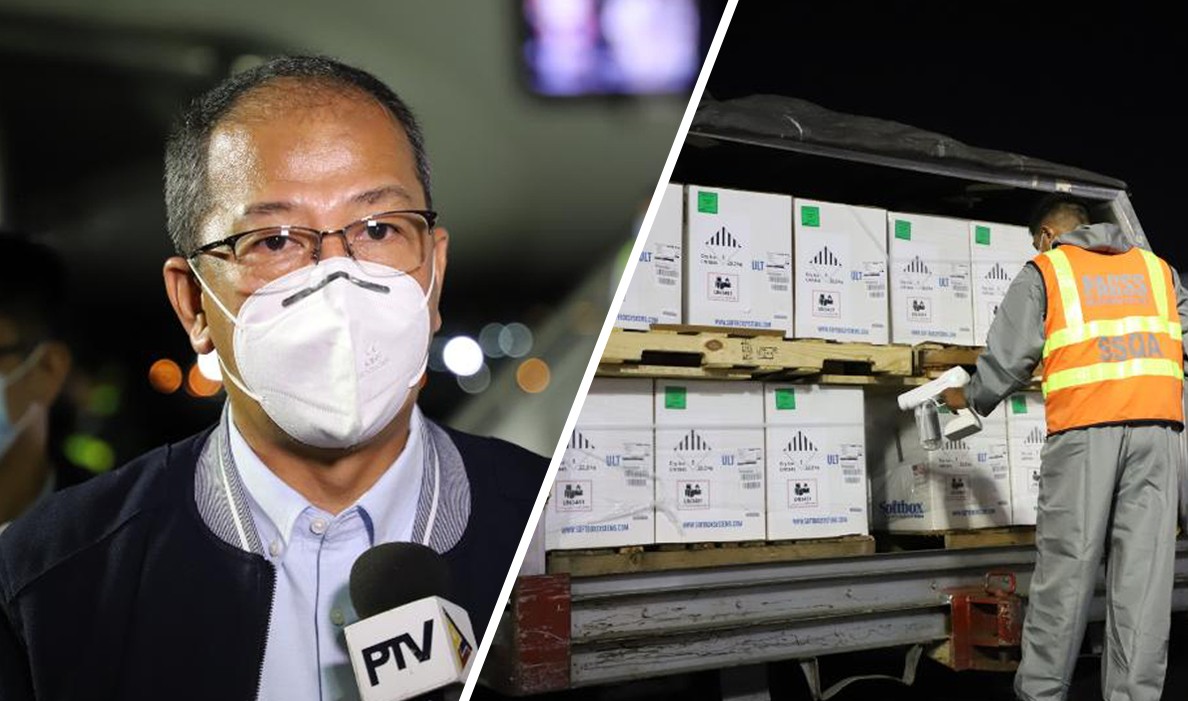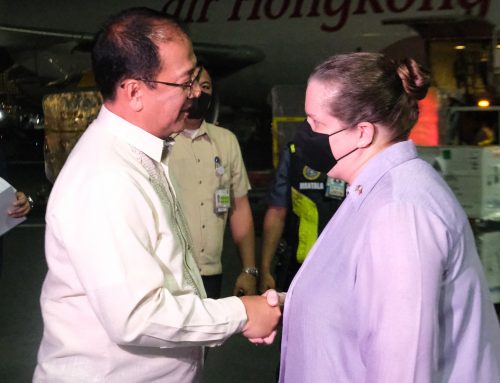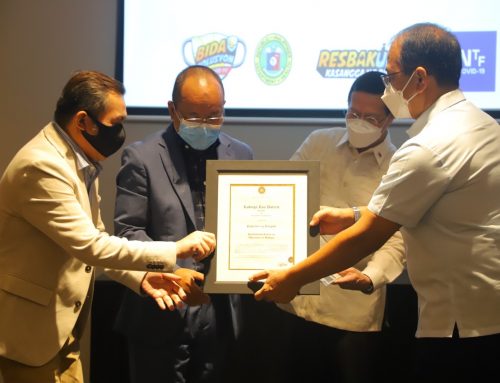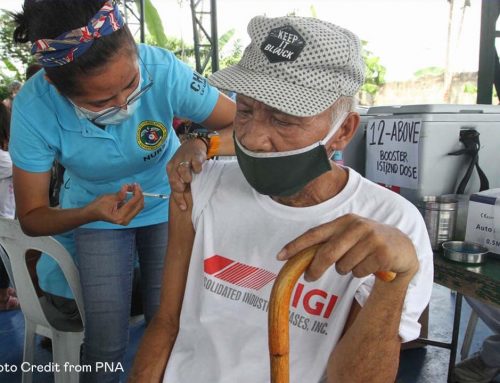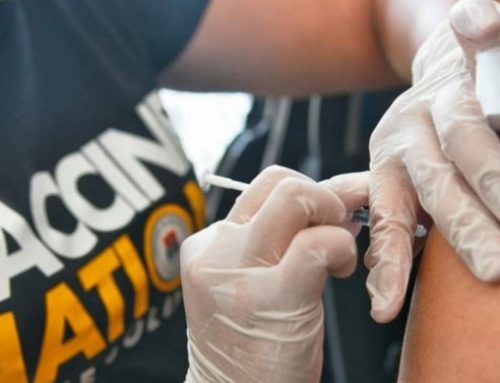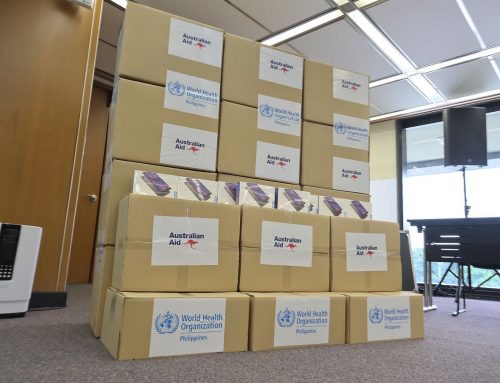MALACANANG (20 September 2021) — The Philippines expects to receive over 100 million COVID-19 vaccine doses by the end of October since the country started receiving both procured and donated vaccines in February.
This was the projection made by National Task Force against COVID 19 Chief Implementer and vaccine czar Secretary Carlito G. Galvez, Jr. in his report during President Duterte’s Talk to the People public address on Monday
“Tuluy-tuloy na pong dumarating ang ating mga bakuna. By the end of October, we will reach more or less 100 million doses delivered to the Philippines,” Galvez said.
The vaccine czar said manufacturers such as Sinovac, Pfizer, Moderna, and Astrazeneca have begun to ship ‘steadier’ supply allocations for the Philippines.
He added that committed donations from the US-COVAX donation and GAVI facility have also started to stabilize.
As of to date, the Philippines has so far received a total of 64,942,000 doses. Of this supply, 13,041,410 doses were delivered this September.
The vaccine czar said that an additional 22 million doses are expected to arrive by the end of the month or in the first week of October.
These shipments include three to five million doses of procured Moderna vaccines and nearly 13 million doses of Pfizer-BioNTech shots procured by the national government and donated supplies coming from the US-COVAX donation.
As of September 20, the country has received 36 million doses of Sinovac, 9.59 million doses of Astrazeneca, 9.17 million doses of Pfizer-BioNTech, 5.25 million doses of Moderna, 3.24 million of Johnson & Johnson, 1.1 million doses of Sinopharm, and 570,000 doses of Sputnik V.
The majority of these doses or 61.91% were procured by the national government, 24.74% were donated through the COVAX facility, 7.74% were purchased by the private sector and local government units (LGUs), and 5.60% were donated by partner and bilateral nations.
Out of the 187.6 million doses secured by the Philippines from various manufacturers and sources for this year, a total of 129 million doses of COVID 19 vaccines are procured orders. These include:
42 million Sinovac doses
40 million Pfizer-BioNTech doses
20 million Moderna doses
17 million Astrazeneca doses
10 million Sputnik V doses
The procured doses from Moderna was the result of pooled orders of the national government and private sector.
Meanwhile, supplies from Astrazeneca were purchased through multiparty agreements with the private sector and local government units.
“As we have a steadier supply from most of the manufacturers, we are now renegotiating with the Russian Direct Investment Fund to secure Sputnik Light vaccines,” Galvez said.
“We hope to gain access to this single shot vaccine that would significantly boost our vaccine rollout and help us inoculate completely our target population at a faster rate,” he added.
Galvez expects that by the fourth quarter, the country’s monthly deliveries will reach at least 30 million doses.
“We are continuously working on increasing our vaccine inventory to achieve our goal of completely inoculating 77 million of the country’s total population by year-end,” he said.
As of September 20, the Philippines has administered 41,793,930 doses nationwide wherein 22,970,212 were given as the first shot.
The number of fully vaccinated individuals in the country has now reached 18,823,718 or 24.40% of the target population.
Downward trend in cases
Meanwhile, Health Secretary Francisco Duque III reported that many areas in the country have shown a ‘slow down’ in the number of cases.
He said that despite the average daily COVID-19 cases of 19,704 last week, the number has decreased by 5% compared to the previous weeks.
“Bagama’t umaasa tayo na ito na ang simula ng pagbaba ng ating mga kaso, oobserbahan pa rin natin sa darating na mga linggo kung talagang bumababa na ang mga kaso. Gayunman, nakita namin ang pagbaba sa National Capital Region (NCR),” Duque said.
NTF Deputy Chief Implementer and testing czar Secretary Vivencio Dizon attributed this downward trend in cases to the country’s scaled up vaccination rollout
“I think all the data from the experts point to the fact that it is really the vaccination program, especially in key cities where the vaccination rate is already very high, that is saving us from the Delta variant,” said Dizon.
As of September 20, 67.54% of NCR’s target population have been fully vaccinated, while 84.60% have received at least one dose of the vaccine.
Other regions are also ramping up their respective inoculation programs, as the government has focused its vaccine deployment to provinces and cities outside the NCR.
“The high vaccination rates are really protecting people from getting severe COVID-19. Meaning, dahil po bakunado ang mga kababayan natin, hindi po malala ang kanilang sakit,” Dizon said.
“Therefore, they do not require the kind of hospital care that was previously required whenever someone gets COVID without the vaccine. That is really the main driver,” he added.
The task force officials stressed that the strict and diligent compliance to minimum public health standards and intensified PDITR (Prevent-Detect-Isolate-Treat-Reintegrate) strategy must continue to ensure full protection against highly-contagious variants of COVID-19. END


